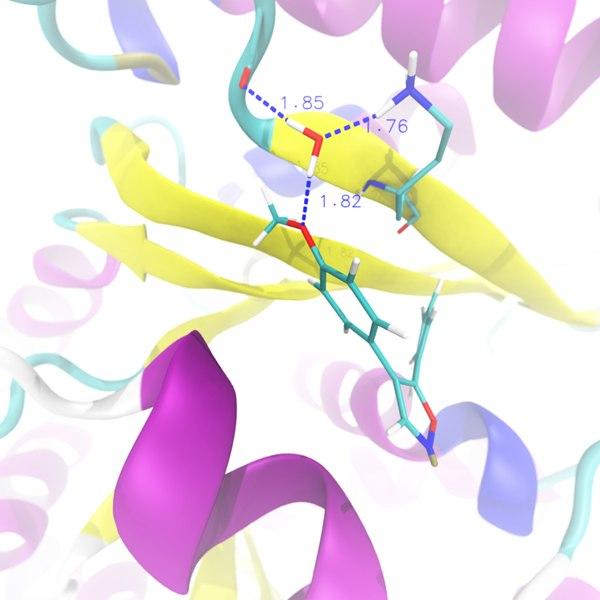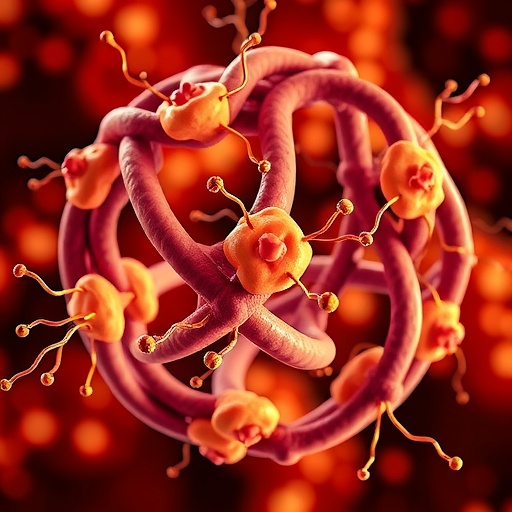
Credit: Victor S.Stroylov et.al.
A group of Moscow scientists has discovered and explained the activity mechanism of a new anti-cancer molecule — diphenylisoxazole. This molecule has been shown to be effective against human cancer cells. The research, published in the journal Bioorganic & Medicinal Chemistry Letters, makes it possible to produce an affordable cancer treatment drug. https:/
Every cell in our body has a cytoskeleton, a system of microtubules and filaments that support the cell’s rigid shape. Microtubules are formed by the protein tubulin and play a key role in the division of both healthy and tumor cells. Therefore, microtubules are a target for antimitotics — anti-cancer drugs that inhibit tumor growth by disrupting tubulin polymerization. Because the unlimited proliferation of cancer cells is what makes the disease so dangerous, many drugs aim at inhibiting this process.
The tubulin molecule has four binding sites (sites where it can interact with a drug), namely the colchicine, taxane/epothilone, laulimalide and vinca alkaloid binding sites. Several substances are known to bind with tubulin at the colchicine site and ultimately disrupt tubulin polymerization, and all of them contain a trimethoxyphenyl ring.
With the help of computer simulations, the Moscow researchers determined which compounds, including those without a trimethoxyphenyl ring, were able to bind to tubulin, and were able to predict the effectiveness of a new substance for such studies — diphenylisoxazole. This molecule is unique in that it is easily synthesized using available compounds — benzaldehydes, acetophenones, and aryl nitromethanes.
The simulation also showed for the first time that the molecule of a substance needn’t have a trimethoxyphenyl ring in order to bind to tubulin at the colchicine site. All previously known tubulin polymerization inhibitors interacting with the colchicine site had a trimethoxyphenyl substituent in their structure, but this element is absent in diphenylisoxazole. This means that there is a yet unexplored structural class of compounds with antimitotic activity that can be used to create anti-cancer drugs with new properties.
It was later shown that diphenylisoxazole inhibits tubulin polymerization in sea urchin embryos, whose rapid cell division resembles that of cancer, making it a frequent subject of such studies. Adding diphenylisoxazole to a vessel containing fertilized sea urchin eggs inhibited cell-reproduction and caused the embryo to rotate instead of swimming forward. This observation indicates that the substance affected the cells’ microtubules. Subsequent experiments proved the molecule’s effectiveness not only on sea urchin embryos but also on human cancer cells.
The scientists pointed out that not only the results of the research but also its methodology hold value.
According to HSE University professor Igor Svitanko https:/
Professor Svitanko also said that computer modelling makes it possible for young researchers without years of experience and intuition regarding synthetics to participate in such complex studies. HSE University has proposed creating a new computer-modelling laboratory that would synthesize new drugs and other substances using computer predicted structures.
###
Media Contact
Liudmila Mezentseva
[email protected]
Original Source
https:/
Related Journal Article
http://dx.




